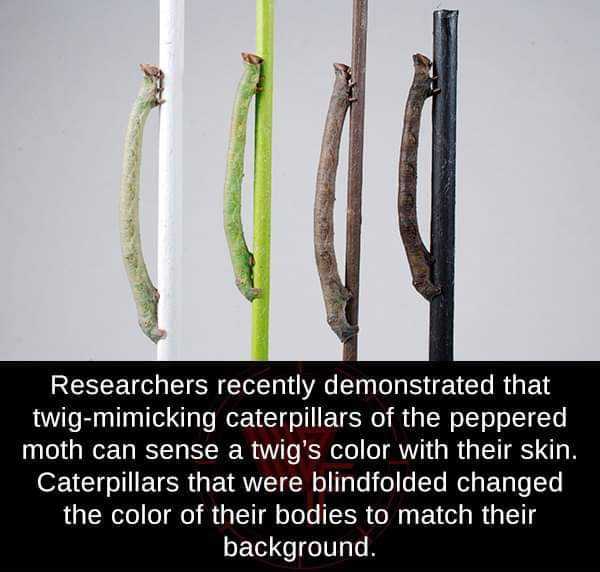
Light sensing by tissues distinct from the eye occurs in diverse animal groups, enabling circadian control and phototactic behaviour. Extraocular photoreceptors may also facilitate rapid colour change in cephalopods and lizards, but little is known about the sensory system that mediates slow colour change in arthropods. We previously reported that slow colour change in twig-mimicking caterpillars of the peppered moth (Biston betularia) is a response to achromatic and chromatic visual cues. Here we show that the perception of these cues, and the resulting phenotypic responses, does not require ocular vision. Caterpillars with completely obscured ocelli remained capable of enhancing their crypsis by changing colour and choosing to rest on colour-matching twigs. A suite of visual genes, expressed across the larval integument, likely plays a key role in the mechanism. To our knowledge, this is the first evidence that extraocular colour sensing can mediate pigment-based colour change and behaviour in an arthropod.
https://www.researchgate.net/publication/334895615_Adaptive_colour_change_and_background_choice_behaviour_in_peppered_moth_caterpillars_is_mediated_by_extraocular_photoreception